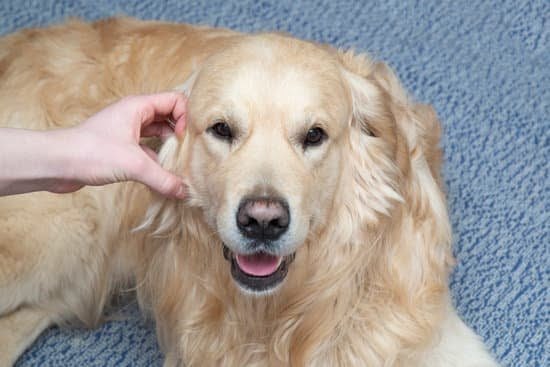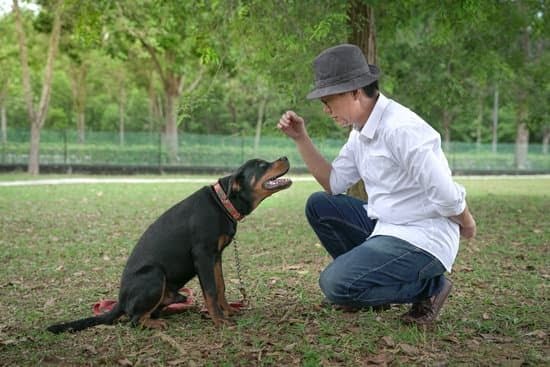For many elderly individuals, the companionship of a furry friend can bring immense joy and comfort. Dogs have a remarkable ability to provide emotional support and alleviate feelings of loneliness and depression in seniors.
That is why dog therapy has become increasingly popular in elderly care facilities around the world. By training your dog to visit the elderly, not only are you helping to improve their quality of life but also fostering a rewarding experience for both you and your four-legged companion.
The benefits of dog therapy for the elderly are truly remarkable. Numerous studies have shown that interactions with dogs can reduce stress, lower blood pressure, and even enhance cognitive function among seniors. Dogs have an innate ability to create emotional bonds with people, offering unconditional love and affection. For those residing in assisted living or nursing homes, where social isolation is often a major concern, visits from therapy dogs can be profoundly uplifting.
Before embarking on this journey with your beloved pet, it is crucial to prepare them for therapy visits. Assessing your dog’s suitability and socialization skills is essential in ensuring successful interactions with elderly patients.
It is important to remember that not all dogs are suited for this type of work; some may be easily frightened or show signs of aggression when faced with new environments or unfamiliar individuals. Proper preparation will help you determine if your dog has the temperament and training necessary to make regular visits safely.
Training your dog to visit the elderly involves both basic obedience skills and specific therapy techniques. A well-behaved dog is crucial when working with vulnerable individuals who may be frail or have sensory sensitivities.
Basic commands such as “sit,” “stay,” and “heel” should be mastered before starting more advanced training exercises tailored specifically for this purpose. As you progress through the training process, focus on teaching your dog gentle behaviors such as laying their head on a patient’s lap or sitting quietly by their side, providing comfort and companionship.
In the following sections of this article, we will explore the necessary steps to embark on this rewarding journey of training your dog to visit the elderly. By understanding the importance of dog therapy for seniors, assessing your dog’s suitability, finding the right facility, and learning how to bond with patients effectively, you will be well-prepared to make a positive impact in the lives of those in need.
So let us proceed with preparing your dog for this invaluable service and delve into the world of dog therapy for the elderly.
Preparing Your Dog for Therapy Visits
Before embarking on the journey of training your dog to visit the elderly, it is essential to assess their suitability for therapy visits. Not all dogs are suited for this type of work, so it’s crucial to consider their temperament, behavior, and overall health. A dog that is calm, well-behaved, and enjoys being around people may be a good candidate for therapy work.
One important aspect of preparing your dog for therapy visits is socialization. Your dog needs to be comfortable around various people, including strangers of different ages and physical conditions. Exposing them to different environments, such as parks or busy streets, can help increase their confidence and adaptability in unfamiliar surroundings.
It is also essential to ensure that your dog is up-to-date on vaccinations and has basic obedience training. Therapy dogs should be obedient and responsive to commands such as sit, stay, down, leave it, and come. This not only ensures the safety of both the dog and the elderly patients but also helps maintain a calm and controlled environment during therapy sessions.
Furthermore, introducing your dog to various sights, sounds, smells, and experiences can help desensitize them to potential triggers that they may encounter during therapy visits. Exposing them to wheelchairs or walkers can help reduce any anxiety they may feel when encountering these assistive devices commonly used by the elderly.
By assessing your dog’s suitability for therapy visits and ensuring proper socialization and obedience training, you are laying a solid foundation for a successful experience in improving the lives of the elderly through dog therapy. Taking the time to prepare your furry friend will greatly benefit both them and the senior citizens they will be visiting in care facilities.
Finding the Right Facility
Assessing Your Needs and Priorities
Before you begin researching and selecting an elderly care facility for your dog’s therapy visits, it is important to assess your own needs and priorities. Consider factors such as location, size of the facility, types of activities offered, and staff-to-patient ratio. In addition, think about whether you prefer a specialized facility that focuses solely on elderly care or if a multi-generational center would be more suitable.
Researching Potential Facilities
To find the right facility for your dog’s therapy visits, take the time to research and gather information about potential options. Start by asking friends, family members or local veterinarians for recommendations. Additionally, conduct online searches to identify facilities in your area that offer elderly care services.
Once you have a list of potential facilities, visit their websites to gather information about their amenities, services, and mission statement. Look for testimonials or reviews from current or former residents and their families. It may also be helpful to schedule a visit to each facility in person to tour the premises and speak with staff members.
Selecting the Best Fit
After conducting thorough research on potential facilities, it is time to make a decision. Consider visiting the top contenders again with your dog present this time. Observe how the staff interacts with both the residents and visiting animals. Take note of any positive interactions or indicators that suggest a welcoming environment for therapy animals.
Another important factor to consider is any specific requirements or criteria set by the facility. Some facilities may require therapy dogs to have certain certifications or vaccinations before they can participate in visits. It is crucial to ensure that your dog meets all these requirements before finalizing your selection.
By taking these steps to thoroughly research and select an appropriate elderly care center for your dog’s therapy visits, you will be setting the foundation for successful and meaningful interactions between your pet and the elderly residents.
Training Your Dog
Once you have determined that your dog is suitable for therapy visits and have found the right facility, it is important to train your dog in both basic obedience and specific therapy skills. Basic obedience training provides a foundation for successful therapy visits by ensuring that your dog is well-behaved and follows commands. This includes teaching them commands such as sit, stay, leave it, and walking nicely on a leash.
In addition to basic obedience training, it is also important to train your dog in specific therapy skills. These skills can enhance the therapeutic benefits of the visits and ensure that your dog has the ability to safely interact with elderly patients. Some specific therapy skills may include:
- Gentle Touch: Training your dog to be calm and gentle when interacting with elderly patients is crucial. Teach them how to approach patients slowly, without jumping or getting overly excited.
- Socialization: Expose your dog to different environments, sounds, sights, and smells so they become comfortable in a variety of settings. Introduce them to people of all ages, including children and the elderly, so they learn how to interact appropriately.
- Sensitive Response: Train your dog to respond sensitively to cues from patients who may have limited mobility or sensory impairments. Teach them how to nudge gently instead of jumping up or pawing at individuals.
- Attention Control: Ensure that your dog can maintain focus on their handler even in distracting environments or when there are other people or animals present. This helps prevent any accidental disturbances during therapy visits.
It is recommended to enlist the help of a professional dog trainer who specializes in therapy animal training for assistance in teaching these skills effectively. They will be able to guide you through the training process and provide insights into any additional skills that may benefit your specific situation or facility requirements.
Remember that training should be conducted in a positive and rewarding manner. Utilize treats, praise, and toys to reinforce desired behaviors. Training sessions should be kept short and enjoyable for your dog to keep them engaged and motivated. With consistent training, your dog will develop the necessary skills to become a successful therapy dog, bringing joy and comfort to elderly patients.
Setting up Successful Visits
Understanding Protocols
Before beginning therapy visits with your dog, it is important to understand the protocols in place at the elderly care center or facility you have chosen. Each facility may have their own specific guidelines and requirements for therapy animals. It is crucial to familiarize yourself with these protocols to ensure a successful and smooth experience for both your dog and the patients.
Some common protocols include providing up-to-date vaccination records, completing a temperament assessment for your dog, and following specific rules regarding hygiene and cleanliness. Additionally, many facilities request that therapy dogs are registered with a recognized therapy dog organization. This registration helps validate your dog’s suitability for therapy work and provides added assurance for the facility and its residents.
Scheduling Visits
Scheduling visits is another critical aspect of setting up successful interactions between your dog and the elderly patients. Contact the activities coordinator or designated person at the facility to discuss available time slots for visits. It is essential to be flexible as visit schedules may need to accommodate other activities or events happening at the facility.
When scheduling visits, consider factors such as the time of day when residents are most likely to be available, their level of alertness during different hours, and any preferences they may have regarding certain days or times. By working in collaboration with the facility staff, you can ensure that your visits are well-received and maximally beneficial for everyone involved.
Preparing Your Dog
In addition to understanding protocols and scheduling, it is crucial to prepare your dog adequately before each visit. This preparation includes ensuring that your dog is clean, well-groomed, and free from fleas or ticks. Trim their nails if necessary and brush their coat to remove any loose hair.
Before entering the facility, take some time to exercise your dog so that they are calm and relaxed during the visit. Dogs that have been properly exercised are more likely to have better focus and remain calm in potentially challenging situations.
By understanding and following the protocols, scheduling visits effectively, and adequately preparing your dog, you can set up successful therapy visits that create a positive impact in the lives of elderly patients. These visits provide an opportunity for your dog to bring joy, comfort, and companionship to those who need it most, while also fostering a sense of fulfillment and purpose for both you and your furry friend.
Bonding with the Elderly Patients
Bonding with the elderly patients is a crucial aspect of dog therapy visits. When a dog and an elderly person are able to form a strong bond, it can greatly enhance the therapeutic benefits of the visits. Here are some strategies to encourage comfort and trust between your dog and the elderly patients:
- Introduce your dog slowly: Begin by introducing your dog to each patient one at a time, allowing them to get acquainted in a calm and controlled environment. It’s important to respect the individual comfort levels of both your dog and the elderly person. Some patients may prefer a slower approach, while others may be more eager to interact.
- Use gentle touch: Touch can be incredibly comforting for many individuals, especially those who may be experiencing physical or emotional pain. Encourage gentle interactions between your dog and the elderly person, such as having them stroke or pet your dog. Always monitor the interaction closely to ensure both parties are comfortable.
- Foster positive associations: Bring along treats or toys that are specifically designated for interactions with elderly patients. This can help create positive associations in their minds and make them look forward to seeing your dog during visits. Reward both your dog and the elderly person for their interactions with praise, treats, or even small gifts like stickers.
Additionally, it’s important to remain sensitive to each patient’s needs and boundaries. Some individuals may be afraid of dogs or have had negative experiences in the past, so always ask permission before allowing your dog to approach someone. Be mindful of any signs of discomfort from either party and adjust accordingly.
By encouraging comfort and trust between your dog and the elderly patients, you can enhance the therapeutic benefits that come from these visits. Dogs have an innate ability to provide emotional support and companionship, making them ideal therapy animals for older individuals who may feel lonely or isolated.
Addressing Potential Challenges
When training your dog to visit the elderly, it is important to be prepared for potential challenges that may arise during therapy visits. These challenges can include anxiety in both the dog and the elderly patients, allergies that some individuals may have, as well as safety concerns for everyone involved. By addressing these challenges proactively, you can ensure a positive and safe experience for all.
One common challenge when introducing a dog into an elderly care center is anxiety. Dogs may experience anxiety due to unfamiliar environments or being around new people. Similarly, elderly patients may feel anxious or fearful around dogs if they have had negative experiences in the past.
To address canine anxiety, it is important to continue socializing your dog in different environments to help them become comfortable with novel situations. Additionally, gradual exposure to new patients and staff members at the care center can help ease their anxiety over time.
Allergies are another consideration when bringing dogs into a healthcare setting. It is crucial to ask facility staff if any of the patients have known allergies to dogs or pet dander. In cases where allergies are a concern, it may be necessary to restrict visits or take extra precautions such as grooming the dog before each visit and ensuring good hygiene practices among handlers.
Safety should always be a top priority during therapy visits. Both the safety of your dog and the elderly patients should be considered. Ensure that your dog is well-trained in basic obedience commands and has proper obedience skills before visiting an elderly care center.
It is also essential to monitor interactions between your dog and patients closely to prevent any accidental injury or distress. Additionally, follow all protocols set by the facility regarding hand hygiene and cleanliness to minimize any risk of infection transmission.
Addressing potential challenges related to anxiety, allergies, and safety concerns is crucial for successful therapy visits with your dog. By taking proactive measures such as continued socialization for your dog, awareness of allergies, and prioritizing safety, you can ensure a positive and rewarding experience for both your dog and the elderly patients you visit.
Building Relationships
One of the key aspects of training your dog to visit the elderly is building strong relationships not only with the elderly patients but also with the staff and other visiting pets. This section will provide guidance on how to engage with staff and fellow therapy animals in order to create a positive and supportive environment for everyone involved.
When engaging with staff at an elderly care center, it is important to establish open lines of communication and maintain a respectful relationship. The staff members play a crucial role in ensuring that visits run smoothly and safely. Take the time to introduce yourself and your dog to the staff, inform them about your therapy dog’s training and certification if applicable, and inquire about any specific protocols or guidelines they may have in place for therapy visits.
Collaboration is key when working with other therapy dogs who may be visiting the same facility. It is important to ensure that your dog is comfortable around other animals before engaging in interactions. Keep in mind that some therapy dogs may have certain sensitivities or preferences when it comes to interacting with other dogs or animals. Always ask for permission from both the facility staff and the owner of another therapy pet before initiating any interactions between dogs.
Engaging positively with both staff members and other therapy pets not only promotes a harmonious atmosphere during visits, but it also contributes to creating a sense of community within the facility. By fostering strong relationships with those who are involved in the therapy program, you can work together towards providing better care, support, and companionship for elderly patients.
| Tips for Engaging with Staff: | Tips for Engaging With Other Therapy Pets: |
|---|---|
| 1. Introduce yourself and your dog to staff members | 1. Ask for permission before interacting with other therapy pets |
| 2. Inquire about facility protocols or guidelines | 2. Observe your dog’s comfort level with other animals |
| 3. Maintain open communication and respect | 3. Foster a sense of community and collaboration |
Expanding on the Benefits
Dog therapy, also known as animal-assisted therapy, has been shown to have a multitude of positive effects on elderly individuals. The presence of a well-trained and friendly dog can bring joy, comfort, and companionship to older adults, ultimately improving their overall well-being. This section will explore the various benefits that dog therapy can have on the elderly.
First and foremost, interacting with dogs during therapy sessions can significantly improve the mental health of elderly individuals. Spending time with a gentle and affectionate dog can reduce feelings of loneliness, depression, and anxiety. The presence of a furry companion can provide emotional support and serve as a listening ear, encouraging seniors to express their thoughts and feelings without fear of judgment.
Furthermore, dog therapy has been found to have physical health benefits for older adults. Engaging in activities with dogs such as walking or playing fetch can contribute to increased physical activity levels among seniors. Regular exercise helps maintain cardiovascular health, improves mobility and flexibility, and even lowers blood pressure. In addition, the tactile nature of petting or stroking a dog’s fur has been shown to decrease stress levels and promote relaxation.
Another key advantage of dog therapy for the elderly is its positive impact on cognitive function. Interacting with dogs requires focus, attention, and problem-solving skills. Engaging in activities such as teaching tricks or playing puzzle games with dogs stimulates mental stimulation and keeps cognitive abilities sharp.
| Benefit | Description |
|---|---|
| Mental Health Improvement | Reduces loneliness, depression, anxiety; provides emotional support |
| Physical Health Enhancement | Increases physical activity levels; improves cardiovascular health and mobility |
| Cognitive Function Enhancement | Promotes mental stimulation and problem-solving skills |
Overall, dog therapy has a significant positive impact on the elderly. It not only brings joy and companionship but also provides mental, physical, and cognitive benefits. With these numerous advantages in mind, it is no wonder that dog therapy programs are becoming increasingly popular in elderly care facilities worldwide.
Conclusion
In conclusion, successfully training your dog to visit the elderly can bring immense joy and fulfillment not only to the patients but also to you as a dog owner. By understanding the importance of dog therapy for the elderly, assessing your dog’s suitability and socialization, researching and selecting the right facility, and training your dog in basic obedience and specific therapy skills, you can ensure that your visits are meaningful and beneficial.
Setting up successful visits involves understanding protocols and scheduling them appropriately. This includes considering the preferences of the patients, following any rules or guidelines set by the facility, and being mindful of their schedules and routines. By doing so, you can create an environment that encourages comfort and trust between your dog and the elderly patients.
It is important to address potential challenges such as handling anxiety, allergies, and safety concerns. Being prepared in advance with strategies to address these challenges will help ensure smooth visits. Additionally, building relationships with staff members and engaging with other visiting pets can enhance the overall experience for everyone involved.
The benefits of dog therapy on the elderly are vast. It has been proven that therapy dogs help reduce loneliness and depression among seniors while increasing their overall sense of well-being. The presence of a furry friend can often evoke memories, stimulate conversation, provide comfort, and promote physical activity.
Frequently Asked Questions
Do therapy dogs make money?
Therapy dogs themselves typically do not make money directly. They are usually owned and handled by their owners who volunteer their dog’s time and services for therapy work.
The owner may participate in various programs or organizations that provide opportunities for therapy dog visits, but any payments made would generally go towards supporting the program rather than directly to the dog or its owner. However, therapy dogs can indirectly contribute to financial benefits by helping individuals in need improve their mental and emotional well-being, potentially reducing healthcare costs associated with anxiety, stress, or depression.
How do I get my dog certified as a therapy dog in Michigan?
To get your dog certified as a therapy dog in Michigan, there are a few steps you can follow. First, it is important to ensure that your dog meets the necessary requirements and temperament for therapy work. This includes having good obedience skills, being friendly and calm around unfamiliar people and other animals, and being comfortable in various environments.
Once you feel confident that your dog meets these criteria, you can contact a reputable therapy dog organization or agency in Michigan to inquire about their certification process. These organizations often have specific training and evaluation processes that assess both the handler-dog team as suitable for therapy work. Upon successful completion of the required assessments, your dog can then be certified as a therapy dog.
How do you train a senior dog?
Training a senior dog requires some adjustments compared to training younger dogs due to factors such as age-related physical limitations or potential health issues. It is essential to consider your senior dog’s individual needs when designing a training plan. Start by consulting with your veterinarian to ensure that your senior dog is physically capable of engaging in training activities comfortably and safely. Focus on positive reinforcement techniques that use rewards such as treats or praise to motivate your older companion without putting undue strain on their body or mind.
Keep training sessions shorter but frequent to accommodate their attention span. Tailor exercises based on what they already know while gently introducing new skills at an appropriate pace for them. Be patient and understanding throughout the process, allowing your senior dog to progress at their own pace and celebrating their achievements along the way.

Welcome to the blog! I am a professional dog trainer and have been working with dogs for many years. In this blog, I will be discussing various topics related to dog training, including tips, tricks, and advice. I hope you find this information helpful and informative. Thanks for reading!





